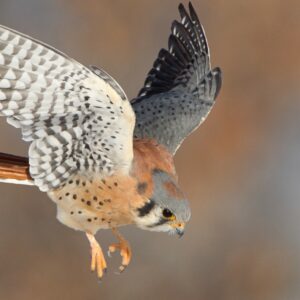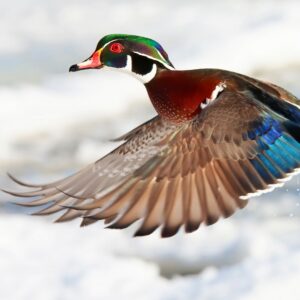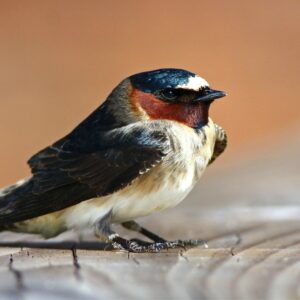State of Canada’s Birds: First-of-its-kind Report Shows Heavy Influence of Humans on Health of Bird Species
June 27, 2012 (Ottawa) –Canada’s bird populations have been heavily influenced by human activity, in ways that have helped some species, and hindered others, according to a first-of-its-kind national report on the state of Canada’s birds.
The State of Canada’s Birds report draws on 40 years of data – from professionals and citizen scientists – to present an overview of how Canada’s birds are faring. It summarizes the status of Canada’s bird populations for eight biomes, including the boreal forest, prairies, Arctic and oceans. The report provides a scientific tool to help public agencies and conservation groups identify the most significant conservation opportunities to ensure healthy ecosystems.
The report finds that there are fewer birds now than in the seventies – overall populations have declined by 12%, but changes vary among species. Some species groups are doing well, while others are declining. Overall, more species are decreasing (44%) than increasing (33%). Declines have been particularly severe for grassland birds, migratory shorebirds and aerial insectivores (birds that catch insects in flight) all of which have declined, on average, more than 40%.
However, other species populations have expanded, illustrating that direct conservation efforts can have a positive impact. The ban on pesticides in the 1970s has helped raptors like the Peregrine Falcon, Osprey and Bald Eagle recover. Effective management of wetlands and hunting has aided waterfowl like ducks and geese.
Birds are a crucial indicator of ecosystem health. Healthy bird habitat provides vital environmental services, including food and fuel, clean air and water, fertile soil, pest and disease control, pollination of plants, and a stable, moderate climate.
The State of Canada’s Birds report is a collaborative effort of the North American Bird Conservation Initiative in Canada (NABCI-Canada), whose members include federal, territorial and provincial governments, conservation NGOs, and private sector organizations.
The State of Canada’s Birds is available online at www.stateofcanadasbirds.org .
Report Findings
The report highlights several changes in Canadian bird populations since 1970. These include:
- On average, Canadian breeding bird populations have decreased 12% since 1970, the year effective monitoring began for most species.
- Of all bird species, 44% have declined, 33% have increased and 23% have remained stable.
- Grassland birds, including longspurs, meadowlarks, Sprague’s pipit, Greater Sage-Grouse and others, are in decline due largely to a loss of habitat.
- Aerial insectivores – birds that catch insects in flight – are declining more steeply than any other group of birds, but the causes of the decline are unknown.
- Overall, shorebirds have declined by almost half, while Arctic shorebirds in particular, including the endangered Red Knot, have declined by 60%.
- Increasing raptor populations, such as the peregrine falcon, point to the success of direct intervention.
- Waterfowl populations have increased in part due to successful management of hunting and wetlands.
- Conserving Canada’s birds requires concerted efforts by all sectors of society, including individuals, corporations, non-government organizations and governments, both in Canada and internationally.
- Ongoing efforts and resources are needed to maintain the successes in groups such as waterfowl, and to ensure effective conservation of all the other bird species in Canada.
Comments
“The State of the Birds report is a measurable indicator of how well we are fulfilling our shared responsibility as stewards of our nation’s wildlife and wilderness areas. Clearly there is much we can do to ensure we have healthy ecosystems for years to come, and this report provides a path to do so.”
Ian Davidson, Executive Director, Nature Canada
“This report would not have been possible without the citizen science programs offered by Bird Studies Canada and our partners. We’re extremely grateful to the thousands of volunteers who support critical bird research and conservation.”
Dr. George Finney, President, Bird Studies Canada
“It’s excellent to see the recognition for the integral role that cattle play in maintaining a healthy habitat for birds. Cattle producers are proud stewards of the land and take great care in their grazing management that contributes to healthy rangelands, pastures and watersheds, providing a natural habitat in which birds, wildlife, insects and native plants can thrive alongside cattle.”
Fawn Jackson, Environmental Affairs Manager, the Canadian Cattlemen’s Association
[separator headline=”h2″ title=”To arrange interviews, or for more information, contact:”]
Chris Sutton
Communications Director, Nature Canada
Phone: 613-562-3447 ext. 248
Cell: 613 323-3331
Email: csutton@naturecanada.ca



